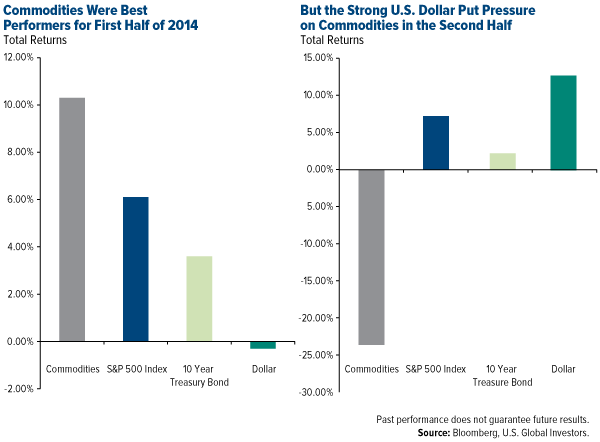Choose Carefully Among Commodities
Post on: 10 Апрель, 2015 No Comment

Michael Johnston
Stock quotes in this article:
DBC
RJI
DJP
This commentary originally appeared on Jan. 24,2012 on ETF Profits — to access all the strategies from our team of ETF professionals, click here .
The rapid growth in the number of exchange-traded products (ETP) in recent years has no doubt been a positive development for investors. The impressive innovation has made new strategies and asset classes available through an incredibly efficient structure. But there are some potential drawbacks to the rapid growth as well: The saturation in certain corners of the market has made it difficult to sort through all the options and come up with a good choice.
For example, investors looking to establish broad exposure to a basket of commodity futures have about a dozen different products from which to choose. Though all of the options are generally similar, there are differences in structure, depth and balance of holdings, expenses, and roll strategies that can end up having a big impact on bottom line returns.
I am actually not a huge fan of commodity ETPs in my personal portfolio. The contango that is often present in futures markets creates some potentially strong headwinds to erode returns, and the diversification benefits that initially attracted many investors to this asset class have been at least partially diminished in an environment where correlations between risky assets have climbed toward 1.0. But I definitely understand the appeal—especially after commodities have proven to be one of the best performing asset classes since markets bottomed out in 2009. S today I’m highlighting one of the less popular products out there that I believe has a lot to offer: the Rogers International Commodity ETN (RJI ).
As the name suggests, RJI is linked to an index that was devised by legendary commodity guru Jim Rogers. Over the last three years, RJI has been one of the top performers of all broad-based commodity ETPs. It gained almost 45% over that period, beating PowerShares DB Commodity Index (DBC ) (up 34%) and iPath Dow Jones UBS Commodity Index (DJP ) (up just 24%), the two most popular options for this asset class, by a wide margin. Past performance is obviously not indicative of future results, but I believe the structure of RJI positions it to continue to beat its peers in the future.
There are two primary reasons why I like RJI. The first is the structure. Though ETNs often get a bad rap for the credit risk inherent in these vehicles, they actually represent the most efficient way to tap into commodities. ETNs avoid tracking error, which can be significant in futures-based strategies, and aren’t forced to pay commissions to roll their holdings. Throw in some potential tax advantages over products such as DBC, and there is plenty of upside to offset the credit risk-related downside of ETNs — at least when it comes to commodities.
But the real reason I love RJI as a tool for commodity exposure is the breadth of the underlying index, which consists of 36 individual commodity futures contracts. By comparison, DBC’s index consists of only 14. DJP holds just 10. So RJI casts a considerably wider net, including more than three times the number of holdings as some of its competitors.
The wide reach might not seem like a huge advantage, but I view this feature as an increased likelihood of getting a boost from an extreme supply related event. For example, most commodity ETPs have zero exposure to orange juice futures, which means they missed out on the surge in prices in recent weeks after worries of a contaminated crop spread. RJI’s weighting to orange juice is small, but the fact that it has anything allocated to this commodity certainly paid off. Similarly, price spikes in other lesser-known commodities can create a performance gap between RJI, which includes them, and other commodity ETPs that don’t.
Another advantage to the deep roster of commodity futures is that the impact of energy price fluctuations on bottom line returns is reduced partially. Like other commodity ETPs, RJI makes a hefty allocation to oil and gas. But the weighting is considerably smaller than some of the other products out there, which has obvious appeal to those who are looking to achieve broad exposure.
When it comes to picking exchange-traded products, bigger isn’t always better. Though RJI doesn’t have nearly the asset base of some of the similar products out there, it is positioned to deliver higher returns and lower volatility over the long run thanks to its wide reach. If you’ve got another commodity ETF or ETN in your portfolio, it might be worth considering a switch.
At the time of publication, Johnston had no positions in the securities mentioned.














